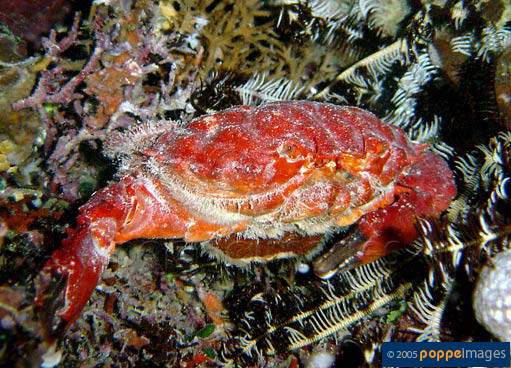| Xanthidae (stone and mud crabs) |
| 15 cm CW (male/unsexed) |
|
reef-associated; marine; depth range 0 - 5 m |
| Indo-Pacific, from Red Sea eastwards to Hawaii and French Polynesia. |
|
Carapace ovate, surfaces smooth; 8 large teeth on each anterolateral margin (often with smaller denticles between them); front divided into 2 distinct lobes, separated by distinct V-shaped cleft. Carpus of cheliped with 2 spines on inner margin. Pincers are very large and unequal, the arm has 1 to 3 spines on the upper border (Ref. 128968). Color: red to reddish brown overall. |
| Adults are often found in shallow waters and coral reefs (Ref. 128968). Marginal levels of toxicity were detected in this species which may contribute to human poisoning (Ref. 107779). Occurs at intertidal reef areas. Benthic. Subtropical and tropical climates (Ref. 343). Mildly poisonous (Ref. 103037). Members of the family Xanthidae range from being algal scrapers to aggressive predators (Ref. 103027). |
|
Not Evaluated (N.E.) Ref. 123251)
|
| poisonous to eat |
|
Source and more info: www.sealifebase.org. For personal, classroom, and other internal use only. Not for publication.

